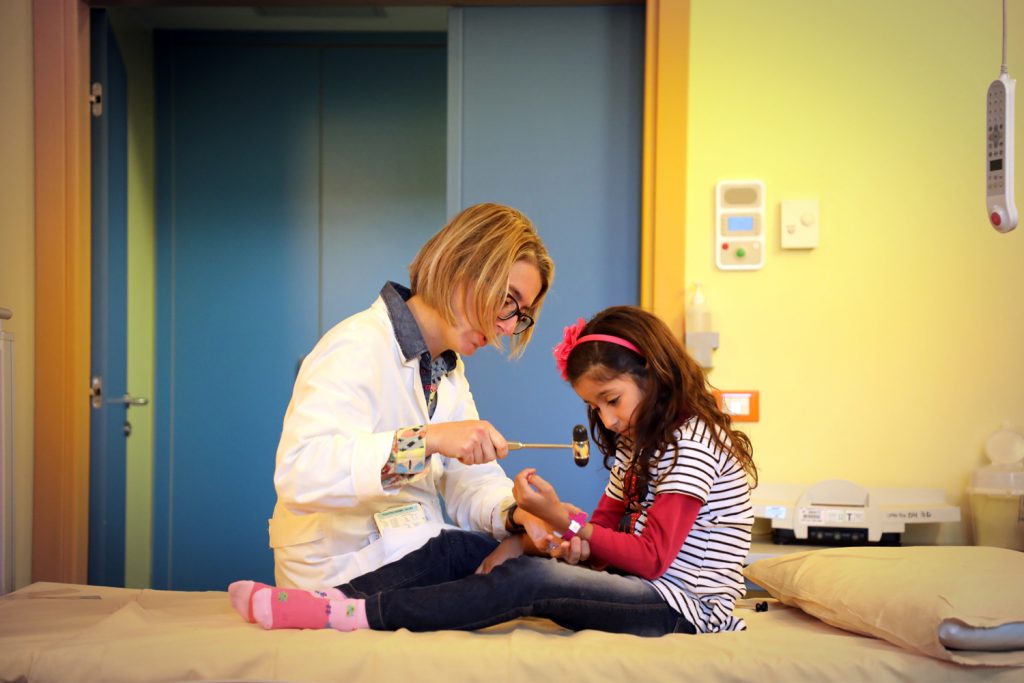The institute, led by Luigi Naldini, is an international reference point for research on advanced therapies. Born in 1996 from an agreement between Fondazione Telethon and the San Raffaele Hospital in Milan, it deals mainly with rare genetic diseases, but in recent years it has opened some lines of research on cancer.
Two of the first gene therapies approved as drugs for rare genetic diseases have emerged in SR-Tiget's laboratories:
- Strimvelis for the treatment of the rare immunodeficiency ADA-SCID
- Libmeldy for the treatment of a severe neurodegenerative disease, metachromatic leukodystrophy.
The institute is a world leader in gene therapy based on the use of vectors obtained from the virus responsible for AIDS, HIV, and was among the first to contribute to another frontier field, that of gene editing.
The institute employs 271 people between research and development, clinical research, administration and research management.
This all-Italian success story is giving families around the world renewed hope that their children will live a happy life.
From the laboratory to the patient
Under the guidance of Luigi Naldini work 17 research groups, which study the essential aspects for the subsequent development of effective therapies: the mechanisms underlying the genetic diseases to be cured, the most suitable experimental models for testing new therapeutic approaches, the behavior of the target cells of these therapies, the role of the immune system.
What makes the SR-Tiget Institute peculiar since its inception is its pronounced translational footprint.

What it means? The institute is focused on facilitating the transition from research conducted in the laboratory to the development of therapies that can be used by patients, thanks to some unique features:
- the location within a hospital of excellence such as San Raffaele and the presence of a unit dedicated to clinical research, directed by the deputy director of the institute Alessandro Aiuti, capable of conducting studies on patients in collaboration with the Hematology and Bone Marrow Transplantation Unit and the Pediatric Immunohematology Unit of the hospital, but also to manage all regulatory aspects. Personal data related to SR-Tiget research activity is managed according to a joint privacy policy signed by Fondazione Telethon and Ospedale San Raffaele.
- the presence of facilities, structures managed by specialized personnel, which allow to improve the therapeutic strategies developed in the laboratory in terms of safety and efficacy (Process Development Laboratory, GLP Test Facility, Vector Integration Core, Immune Core)
- partnerships with pharmaceutical companies and start-ups born from the research of the institute, to promote the real availability of therapies developed in the laboratory.
The strategic lines of the institute
Overall, all the basic, translational and clinical research work of the SR-Tiget Institute is organized along four strategic lines, each dedicated to a particular therapeutic strategy.
Ex vivo gene therapy
It involves the correction of blood stem cells taken from the patient (ex vivo, i.e. outside the body) by viral vectors, viruses that have been appropriately modified to provide corrected versions of defective genes. Once corrected, the reinfused cells are able to restore the missing function to the body.
This technology has already been successfully applied by the institute on diseases of the immune system (ADA-SCID, Wiskott-Aldrich syndrome), blood (beta thalassemia), nervous system (metachromatic leukodystrophy) and metabolism (Hurler syndrome).
The researchers' goal is to use their experience to apply lentiviral vector technology to other genetic diseases, such as osteopetrosis, adenosine deaminase deficiency type 2 (DADA2) or lysosomal storage diseases such as alpha-mannosidosis, mucopolysaccharidosis type 4, Krabbe disease and gangliosidosis.
What research groups are involved?
The research groups involved are those of:
- Luigi Naldini
- Alessandro Aiuti
- Maria Ester Bernardo
- Raffaella Di Micco
- Andrea Ditadi
- Giuliana Ferrari
- Bernhard Gentner
- Anna Kajaste-Rudnitski
- Eugenio Montini
- Anna Villa
- Renato Ostuni
- Alessandra Mortellaro
In vivo gene therapy
It allows to provide working versions of defective genes by administering the vector directly into the patient's body.
The goal of the institute's researchers is to be able to apply this therapeutic approach to hemophilia, by administering the lentiviral vector in the blood, or to genetic diseases of the nervous system such as leukodystrophies or gangliosidosis through an intracerebral injection.
What research groups are involved?
The research groups involved are those of:
- Alessio Cantore
- Angela Gritti
Gene and epigenetic editing
Provides for the timely correction of defects responsible for genetic diseases through real molecular scalpels that are delivered into the cells to modify genes that do not work (genetic editing) or to turn off toxic genes (epigenetic editing). Similar to gene therapy, the correction can occur either outside (ex vivo) or inside (in vivo) the body.
The objective of the institute, which has already made an important contribution of knowledge to this emerging field, is to study the potential of ex vivo gene editing for primary immunodeficiencies in which "traditional" gene therapy is not applicable (Omenn syndrome and hyperIgM), and in vivo epigenetic editing to turn off the genes responsible for genetic diseases characterized by the production of a toxic protein (Huntington's disease, familial hypercholesterolemia).
What research groups are involved?
The research groups involved are those of:
- Angelo Lombardo
- Luigi Naldini
- Alessandro Aiuti
- Raffaella Di Micco
- Anna Kajaste-Rudnitski
- Anna Villa
Modulation of the immune response
In addition to being our natural defense against pathogens such as viruses and bacteria, the immune system can also become an important ally in enhancing the effect of a therapy. Thanks to the study of the mechanisms underlying different types of immune response, researchers at SR-Tiget are trying to identify strategies to make the therapies developed at the institute even more effective, for example by preventing the immune system from neutralizing the effect or, vice versa, to obtain a synergistic effect against the target (a toxic protein, a tumor, etc.).
What research groups are involved?
The research groups involved are those of:
- Silvia Gregori
- Luigi Naldini
- Bernhard Gentner
- Renato Ostuni